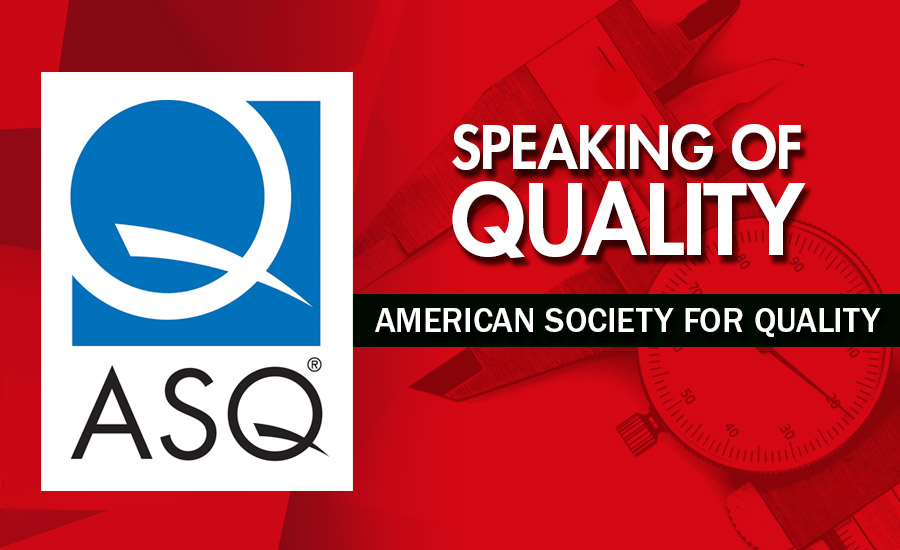In 2011, Sipho Tjabadi, general manager, Eskom Quality Management, South Africa, spoke at the ASQ Audit Division Conference. To punctuate his keynote address’s points, Tjabadi brought a video titled “The Cost of Quality.” For seven minutes the audience was transfixed while several quality failures were presented, root causes offered, and total cost in materials (and, too often, life) were calculated on screen. After the conference the video was posted to the audit division website. It continues to be a popular page.
The video powerfully illustrates cost of quality. But what does cost of quality really mean? How do—or should—we define the term? To answer, let’s first take a step back by asking you to complete this task:
Define quality.
While most of us can identify what a quality product or service is, it is often more difficult to convey that to someone else. How many times have you—as a quality professional—when a person asks you what quality is, allowed them to supply the answer then filled in the gaps? That’s fairly common with the ASQ member.
Defining Quality
Your customer will generally relate quality to the way in which a product works. While a good starting point, quality is not only what a product or service is but also what a methodology or tool does. This is certainly the way a quality professional must think.
Quality is:
- Waste reduction
- Continuous improvement (which might include process improvement)
- Performance excellence (there’s that word excellence)
- Product safety
- Service delivery
- Exceeding customer expectations
In supplying a definition in the form of a bulleted list, we include intention. Nothing in this list is completely separate from the others, nor are they completely interrelated, but depending on what you are trying to do, quality will mean something different to you.
We can now turn to cost of quality. With the multiple quality definitions in circulation, it is no wonder cost of quality is defined in different ways. Unlike the definition of quality, however, many of the terms used to define cost of quality are incorrect.
What Is Cost of Quality?
Cost of quality is often thought of as the price of creating a quality product. While on the surface this appears to make sense, this definition is absolutely incorrect.
In actuality, the cost of quality is the cost of NOT creating a quality product or service. What is the difference? The former (incorrect) definition covers product/service costs only. Cost of quality covers any cost that would not have been expended if quality were perfect.
In “The ASQ Quality Improvement Pocket Guide: Basic History, Concepts, Tools, and Relationships,” Grace L. Duffy defines cost of quality:
“Cost of quality is a methodology that allows an organization to determine the extent to which its resources are used for activities that prevent poor quality, that appraise the quality of the organization’s products or services, and that result from internal and external failures. Having such information allows an organization to determine the potential savings to be gained by implementing process improvements.”
There are four costs your organization needs to examine: prevention, appraisal, internal failure, and external failure. These costs cover your entire operation, including your quality management system (QMS).
Planned costs—design, implementation, and maintenance—occurring prior to the operation of your organization’s QMS are the preventive costs.
Measuring and monitoring activities should be listed as appraisal costs. Duffy further explains these costs “are associated with the suppliers’ and customers’ evaluation of purchased materials, processes, products, and services to ensure that they conform to specifications.”
When products do not meet design quality standards prior to level the manufacturing facility, the costs associated with rework and/or scrapping the product is an internal failure cost. On the other hand, external failure costs are incurred to remedy defects discovered by customers.
Yes, this is a daunting list of costs. Perhaps this contributes to organizations cutting quality corners, as is evidenced every time we turn on the news. Recalls and customer complaints cost companies millions of dollars and brand trust as well.
Quality is essential. There is a cost to attaining and improving quality. There is a bigger cost in failing to produce quality work. Don’t allow a definition to get in the way of your work. You know what quality is. Achieve it!
You can find more about cost of quality, including free articles and case studies, at asq.org/cost-of-quality/index.html.




